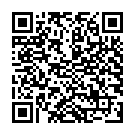|
|
|
| Module code: MST2.WEW |
|
|
3V+1P (4 hours per week) |
|
4 |
| Semester: 1 |
| Mandatory course: yes |
Language of instruction:
German |
Assessment:
Written exam (120 min)
[updated 13.11.2024]
|
MST2.WEW (P231-0087, P231-0088) Mechatronics and Sensor Technology, Bachelor, ASPO 01.10.2019
, semester 1, mandatory course
MST2.WEW (P231-0087, P231-0088) Mechatronics and Sensor Technology, Bachelor, ASPO 01.10.2020
, semester 1, mandatory course
|
60 class hours (= 45 clock hours) over a 15-week period.
The total student study time is 120 hours (equivalent to 4 ECTS credits).
There are therefore 75 hours available for class preparation and follow-up work and exam preparation.
|
Recommended prerequisites (modules):
None.
|
Recommended as prerequisite for:
|
Module coordinator:
Prof. Dr. Moritz Habschied |
Lecturer: Prof. Dr. Moritz Habschied
[updated 14.12.2018]
|
Learning outcomes:
After successfully completing this course, students will be familiar with the tensile test, hardness test methods and the charpy impact test and will be able to determine and interpret the corresponding characteristic values. They will be able to attribute specific material behavior to the respective microstructure.
Students will be familiar with the basics of elastic and plastic deformation, the microstructure of metals and basic mechanisms for increasing strength. They can correlate these with the material entanglement observed.
Students will be familiar with the basic types of phase diagrams in binary systems, as well as iron-cementite diagram and the connection to cooling curves. They will be able to derive the evolution of the microstructure and correlate it with real structures.
They will be able to select the annealing and hardening processes to steels required to achieve desired properties. They will also be able to select suitable surface hardening methods.
Students will be able to determine the microstructure of steel structures.
In practical exercises, they will learn to work in teams to acquire new knowledge and to work on interdisciplinary tasks. They will be able to reflect their opinions and defend them with factual arguments.
[updated 13.11.2024]
|
Module content:
1.0 Tensile testing
1.1 Stresses and load types
1.2 Material behavior and characteristic values
2.0 Structure of metals
2.1 Grain structure and lattice types
2.2 Lattice defects and intermediary connections
2.3 Strengthening mechanisms
2.4 The relationship between structure and tensile testing
2.5 Notched bar impact test and hardness test
3.0. Basics of heat treatment
3.1 Diffusion
3.2 Recovery and recrystallization
4.0 Basics of alloying theory
4.1 The formation of a microstructure
4.2 State diagrams of binary systems (Zweistoffsysteme)
4.2.1 Complete solubility in the solid state
4.2.2 Complete insolubility in the solid state
4.2.3 Limited solubility in the solid state
5.0 Iron-carbon phase diagram
5.1 Difference between stable and metastable system
5.2 Iron-cementite phase diagram
6.0 Steel heat treatment
6.1 Annealing
6.2 Isothermal transformation diagram
6.2.1 Data in the isothermal transformation diagram
6.2.2 Microstructures in isothermal transformation diagrams
6.2.3 Influence of C-content and alloying elements
6.3 Hardening processes
6.3.1 Quenching
6.3.2 Tempering
6.3.3 Quenching & tempering
6.4 Surface hardening processes
6.4.1 Overview and classification
6.4.2 Case-hardening
6.4.3 Nitriding
Lab work:
- Tensile testing
- Charpy impact test and hardness test
- Thermal analysis
- Iron-carbon phase diagram
- Steel heat treatment
- Jominy end-quench test
[updated 13.11.2024]
|
Teaching methods/Media:
Interactive, seminaristic lecture
Practical training in the lab in small groups
[updated 13.11.2024]
|
Recommended or required reading:
Online and library
Bargel/Schulze: „Werkstoffkunde“, Springer-Verlag, Berlin, Heidelberg, New York, 12. bearb. Auflage 2018
Weißbach W., Dahms M., Jaroschek C.: „Werkstoffe und ihre Anwendungen: Metalle, Kunststoffe und mehr“, Springer Vieweg; 20., überarb. Auflage 2018
Nur Bibliothek
Läpple, V.: „Wärmebehandlung des Stahls“, Verlag Europa-Lernmittel, Haan-Gruiten, 11. aktualisierte Auflage 2014
Läpple, V., Kammer, C., Steuernagel, L.: „Werkstofftechnik Maschinenbau“, Verlag Europa-Lernmittel, Haan-Gruiten, 6. Auflage 2017
Greven, E., Magin, W.: „Werkstoffkunde und Werkstoffprüfung für technische Berufe“, Verlag Handwerk und Technik; 18. Auflage 2015
[updated 13.11.2024]
|


